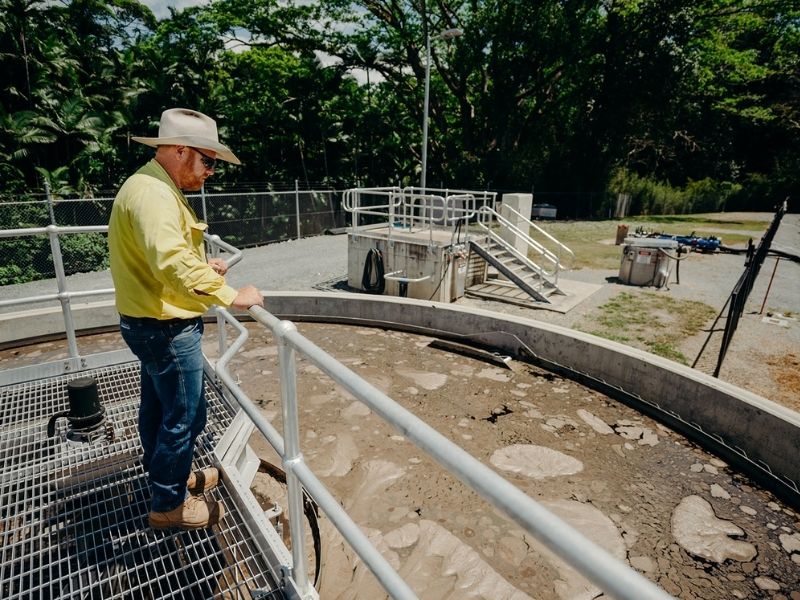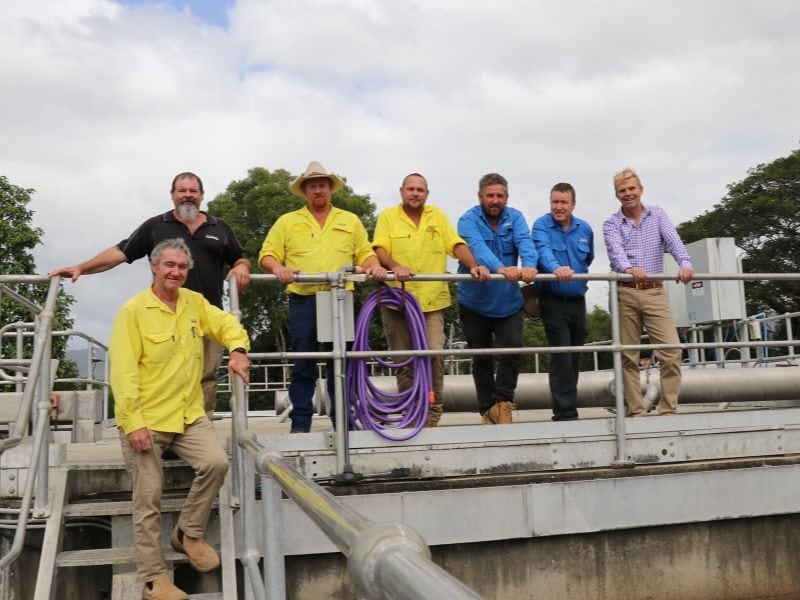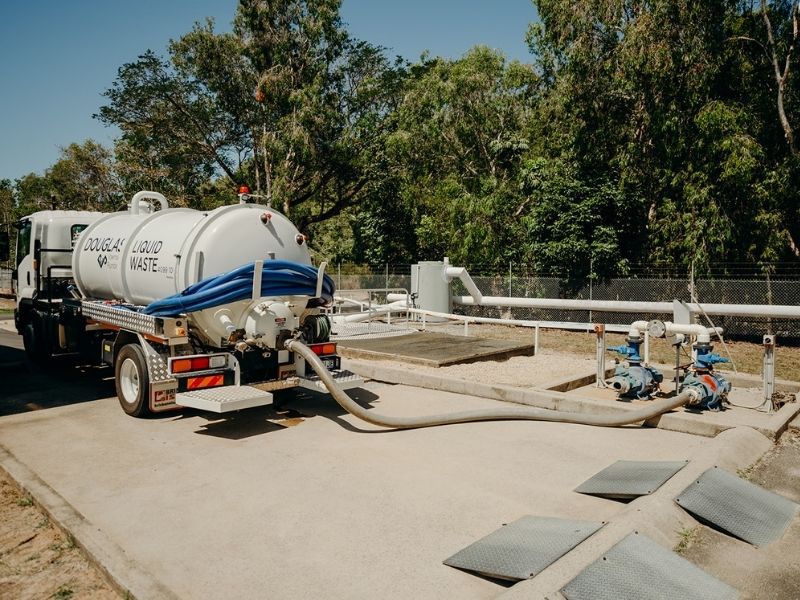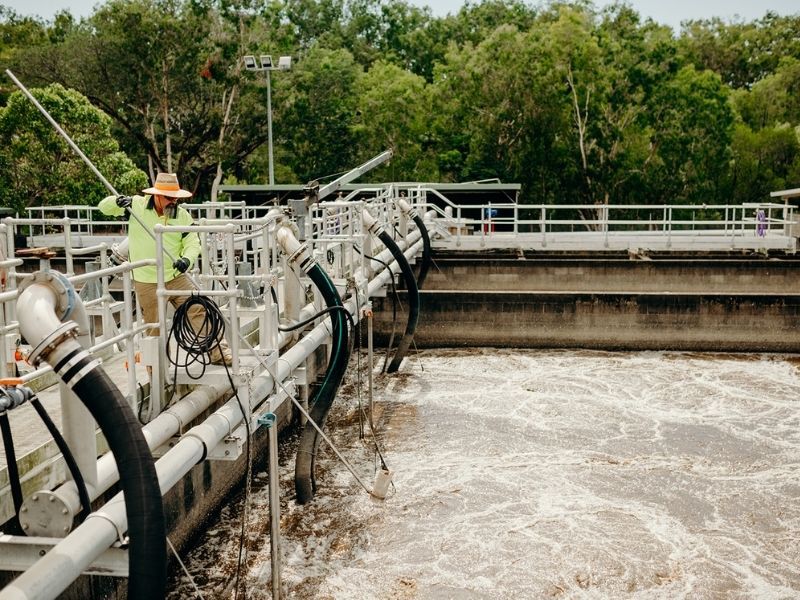What Is Wastewater?
Wastewater is defined as the liquid waste generated by a community. Wastewater actually contains about 99.9% of pure water and 0.1% of solids by weight. Wastewater comes from a combination of homes, local commercial and light industrial sites such as hotels, clubs, caravan parks, restaurants, commercial laundries, petrol stations and hospitals. It does not include roof water or surface runoff generated at these properties, although in periods of heavy rainfall, a significant amount of surface runoff finds its way into the sewerage network which can cause high inflow problems at the wastewater treatment plants.
Council employs a range of wastewater treatment processes at the treatment plants to remove solid waste from the water, so that it can be safely recycled and used for irrigation purposes or returned to the environment.
For more information, watch the ‘Our Wastewater Treatment’ videos below that takes you on a journey on how your waste is handled once it goes down your drains at home.
Our Wastewater Treatment Plants
Port Douglas WWTP
Location: Port Road, Port Douglas
Service Area: Port Douglas, Craiglie
Capacity: 21,000 people or 5.7 ML/day
Treatment Process:
Sequencing batch reactor. Effluent is disinfected with ultraviolet light and then used for recycled water or discharged to Dickson’s inlet. Sludge is dewatered from an aerobic digestion system using a belt filter press and then sent to agricultural users for beneficial reuse.
Recycled water initiatives:
Class B recycled water, suitable for controlled irrigation is pumped to the golf courses at the Grand Sheraton Mirage and the Palmer Sea Reef resorts. Recycled water is also used at the plant for wash down purposes.
Mossman WWTP
Location: Junction Road, Mossman
Service Area: Mossman, Mossman Gorge community, parts of Cooya.
Capacity: 6,000 people or 1.65 ML/day
Treatment Process: Oxidation ditch with clarifier. Treated effluent is chlorinated and discharged to the Mossman River. Sludge is de-watered via a sludge lagoon and a belt filter press. Dewatered sludge is then sent to agricultural users for beneficial reuse. There is currently no facility to treat the effluent to a higher standard that can be used for irrigation.
Connecting Sewerage at your property
All plumbing and drainage work must comply with current legislative requirements and regulations. For detailed plumbing and drainage information, go to the Department of Housing and Public Works website.
Plumbing Legislation
Plumbing and drainage is regulated under state government legislation and is available for viewing on the Department of Housing and Public Works website.
- Plumbing and Drainage Act 2018
- Plumbing and Drainage Regulation 2019
- Queensland Plumbing and Wastewater Code
Do I Need A Plumbing Approval?
In Queensland, there are four categories of plumbing and drainage work.
Permit Work
Permit work requires Council assessment and approval prior to plumbing and drainage work commencing and requires at least one inspection.
Examples of permit work include:
- installation of fixtures for a new building or structure of any National Construction Code, Building Code of Australia classification/s;
- installation of on-site sewerage system or replacing an on-site sewerage irrigation system or septic trench;
- work that is commonly known as ‘trade waste’ that will involve or is likely to involve discharge of a prohibited substances into a regulated sewer;
- any drainage work for a building or structure served by a combined drain;
- water supply connections and disconnections;
- work that involves an alternative solution under any of these codes, the National Construction Code Plumbing Code of Australia, Queensland Plumbing and Wastewater Code or the Queensland Development Code as may be applicable.
Notifiable Work
Notifiable work can be performed without Council approval or mandatory inspections but must be performed by an appropriately licensed person. The licensed person must notify the Queensland Building and Construction Commission (QBCC) to advise that the work has been completed by filling out Form 4 on their website. Notifiable work includes the majority of work undertaken in existing buildings, such as installation of new fixtures in bathrooms or kitchen renovations. For more information and notifiable work categories, go to the QBCC website.
Minor Work
Minor work must be performed by a QBCC licensee but doesn’t need to be approved by the local government or reported to QBCC.
Minor work includes:
- unblocking sanitary plumbing or sanitary drainage;
- repairing a broken or damaged pipe;
- maintaining or repairing an apparatus;
- installing, replacing or removing an apparatus, other than:
- a dual check valve with atmospheric port;
- a temperature control device;
- a testable backflow prevention device; or
- a water heater;
- (The above works are Notifiable Works and a Form 4 must be lodged with QBCC)
- maintaining, repairing, replacing or removing a fitting or fixture;
- maintaining or repairing a greywater use facility or an on-site sewage facility (repairing or maintaining an irrigation system for the disposal of effluent from the facility is unregulated work). Please note: To replace an on-site sewerage irrigation system or septic trench is Permit Work and requires a Form 1 to be lodged with Council;
- installing a greywater diversion device;
- maintaining, repairing or replacing a fire hydrant or fire hose reel, unless schedule 3, section 2 applies to the work;
- sealing a supply pipe downstream from the water meter for a class 1 or 10 building or structure;
- installing, removing or replacing an automatic switching device for a rainwater tank.
Unregulated Work
Anyone can do unregulated work. You don’t need to be licensed nor do you need approval by QBCC or local government or report it.
If you aren’t a QBCC licensee and want to carry out unregulated plumbing work, you must still meet the minimum standards of work under the legislation and codes.
Unregulated work includes:
- replacing a shower head or domestic water filter cartridge;
- replacing a jumper valve or washer in a tap;
- repairing or replacing a drop valve washer, float valve washer or suction cup rubber in a toilet cistern;
- replacing caps to ground level inspection openings on a sanitary drain;
- cleaning or maintaining a ground level grate for a trap on a sanitary drain;
- installing or maintaining an irrigation or lawn watering system downstream from a tap, isolating valve or backflow prevention device on the supply pipe for the watering system;
- repairing or maintaining an irrigation system for the disposal of effluent from a greywater use facility or on-site sewage facility;
- fire protection work for testing plumbing carried out by a holder of a fire protection occupational licence or another QBCC licence;
- incidental unskilled tasks (e.g. excavating or backfilling a trench).
Contact
If you would like more details or assistance, please contact Council’s Plumbing and Drainage Inspector on (07) 4099 9444 or email plumbing@douglas.qld.gov.au.






